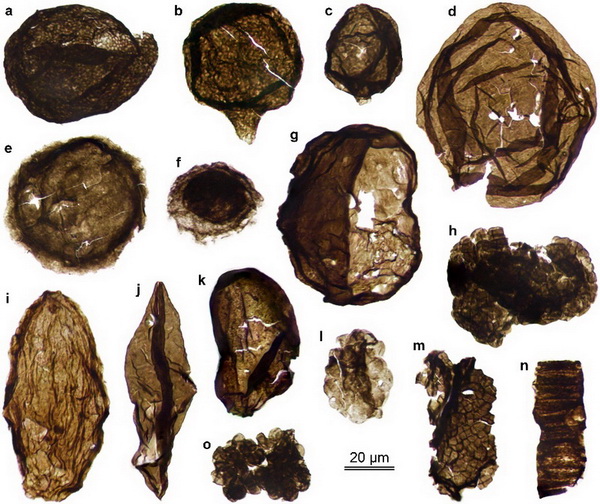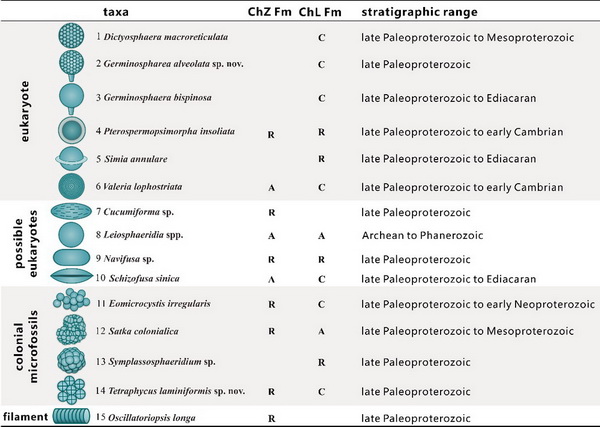Archaea, bacteria and eukaryotes constitute the cellular life on our planet, but all complex life on Earth are eukaryotes with nuclei inside cells. Therefore, the origin and early evolution of eukaryotes is one of the most puzzling evolutionary events in the history of life on Earth, and has been a hot topic in evolutionary biology and paleobiology. Available fossil evidences demonstrate that eukaryotes already appeared during the late Paleoproterozoic around 1,700 million years ago. However, convincing eukaryotic fossil records are scarce, so little is known about early diversity and cellular development of eukaryotes during the Paleoproterozoic.
Recently, an international research group led by Prof. ZHU Maoyan from the Nanjing Institute of Geology and Palaeontology, Chinese Academy of Sciences, discovered diverse eukaryotic microfossils from the late Paleoproterozoic sedimentary rocks (1,700 Ma) in the Yanshan Range, North China. The new eukaryotic fossil assemblage represents the earliest diverse eukaryotes on Earth so far, providing new insights into the origin and early evolution of the eukaryotic life.
The reported fossils were recovered by techniques of palynological maceration from the black shales of the late Paleoproterozoic Changzhougou and Chuanlinggou formations (1.67-1.64 Ga) in the Yanshan area. The fossil assemblage is composed of beautifully preserved organic-walled tiny microfossils which are predominated by spheroidal unicellular fossils with less abundant process-bearing, colonial and filamentous forms, and are attributed to 14 genera and 15 species with 2 newly described taxa. Among them, 10 species are interpreted as eukaryotic species (including 6 convincing and 4 ambiguous species) based on a combination of large cell dimensions and complex morphological characteristics, such as reticulate sculpture, concentric striations, tubular extensions, equatorial flanges and large internal bodies. The complex morphology and diversity revealed by these unicellular eukaryotes suggests a complexity of eukaryotic cellular development (e.g. cytoskeleton, endomembrane system) and a moderate diversification of eukaryotic life by the late Paleoproterozoic, comparable to that during the Mesoproterozoic.
The new finding is recently published by the international geological journal Precambrian Research. This study was supported by the Strategic Priority Research Program (B) of CAS, the National Natural Science Foundation of China, and the Swedish Research Council.

Organic-walled microfossils from the c. 1.7 Ga Changzhougou and Chuanlinggou Formations

The diversity, relative abundance and stratigraphic ranges of microfossils in the study
Download:
